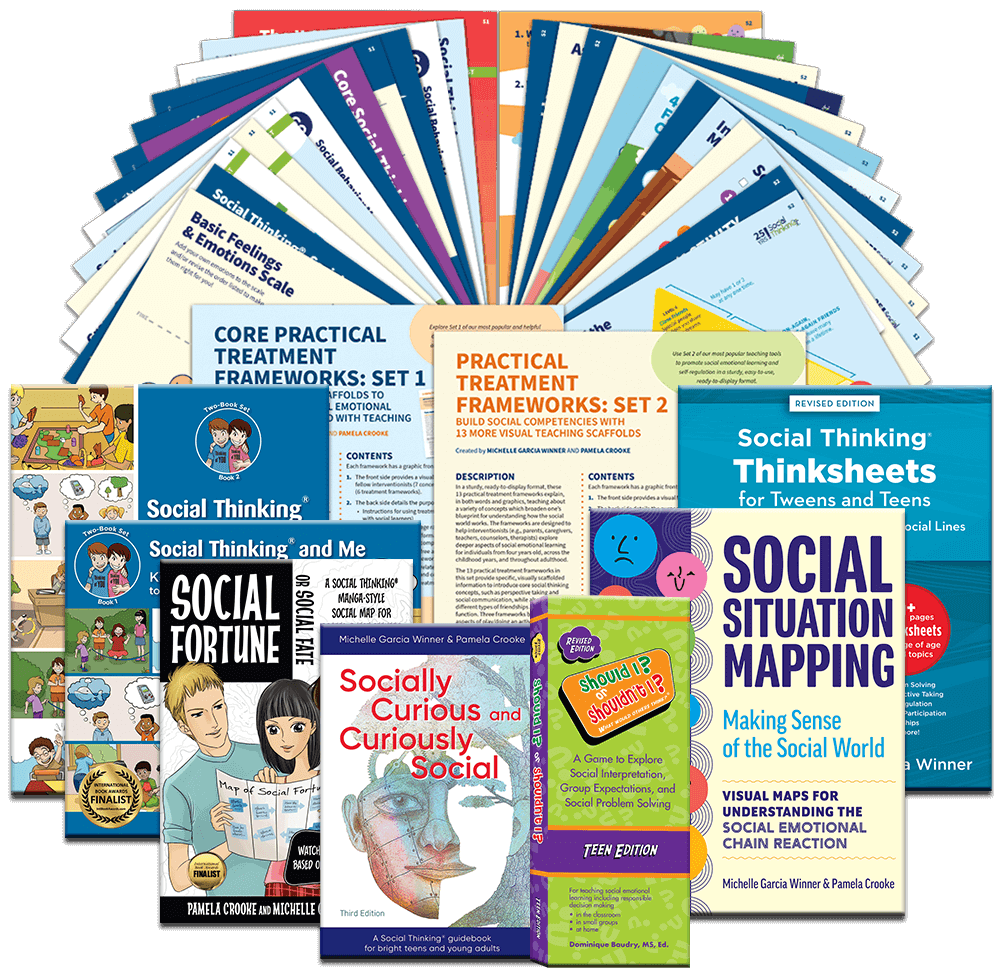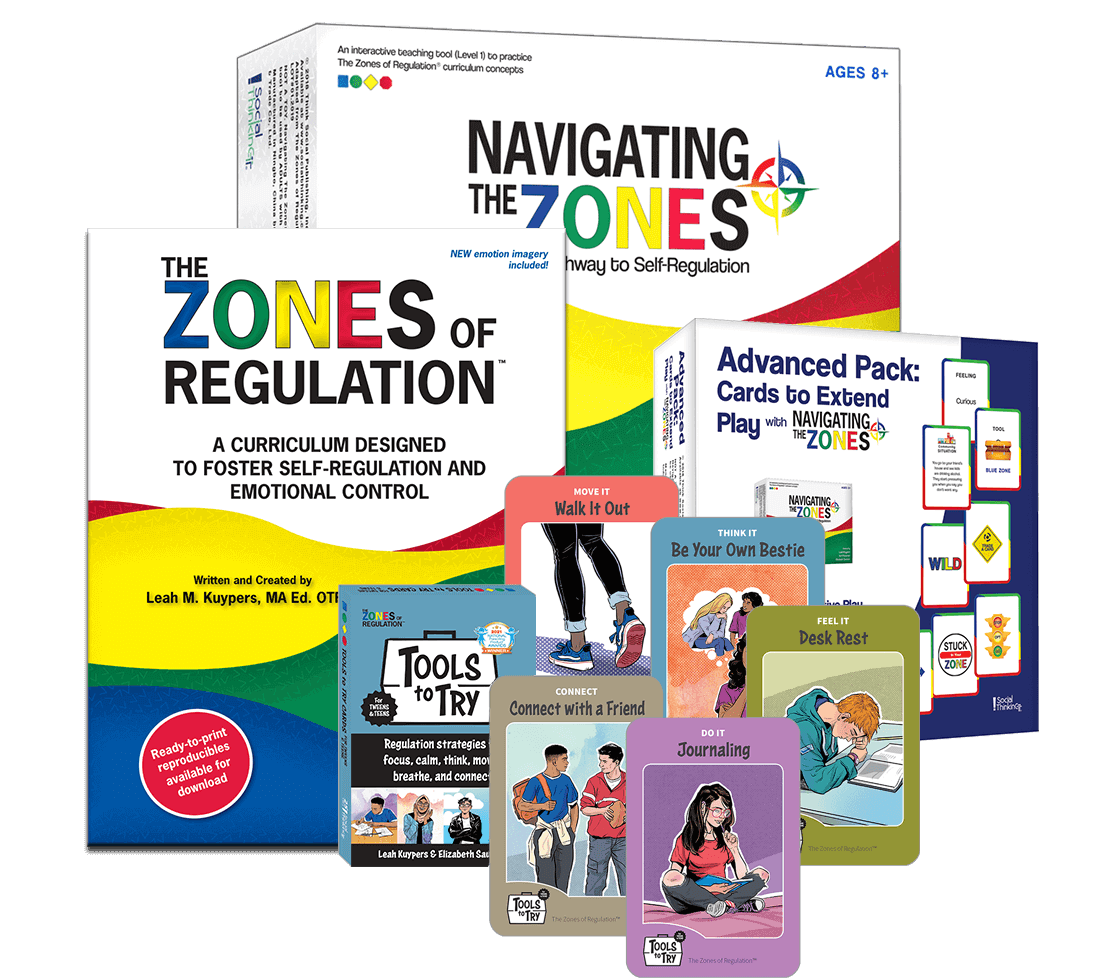
Part 1 of this two-part series explores
- Strategies to help students want to learn to help themselves
- Dos and don’ts when supporting resistant (self-protective) social learners
- Practical strategies to guide students to learn about executive functions
Part 2 of this two-part series examines the role of executive functions, social emotional learning, and use of metacognitive strategies when helping students learn how to meet their own goals. Concepts related to social conformity, boredom management, and fostering autonomy and motivation by developing one’s own self-management and public relations campaigns are also explored.
3.5 hours of training and CE credit available for select professionals. For any special accommodations or assistance with resources email us.
Part 1: How Can We Help Teens When They Want Us to Go Away?
Series Name: Exploring the Unique Needs of Teens Who Are Developing Social Self-Awareness
Replay access through November 30, 2023
Detailed Description
Who should attend
Teenagers with social emotional learning differences and/or challenges have unique developmental needs. They routinely hear from adults, “you can’t act like anymore” or “be treated as children.” Yet, they may not have developed a foundational set of tools to tackle the growing and changing social, emotional, and organizational expectations of being a teenager. How can we help bridge this gap?
Highlights in this course include but are not limited to:
- First steps toward helping teens want to learn to help themselves
- Brief overview of the Social Thinking–Social Competency Model and how anxiety may get in the way of social emotional learning
- Helping interventionists (parents and professionals) explore how laws in the USA and special education services change when a person grows out of childhood and into adulthood. (The general message of this information is applicable to people in all countries around the world.)
- Exploring what it means to turn 18 years old: is the student really “free to do whatever I want”?
- Redefining independence
- Helping interventionists see the world through the eyes of individuals considered resistant, or as we would say, “self-protective.”
- Learning how to help students explore different ways in which they “don’t care”
- Exploring dos and don’ts to encourage active, productive participation in sessions
- Helping students learn about their own social expectations for others through the use of a “Me Map
- Learning to understand one’s own feelings, memories, and anxieties
- Learning about the power of developing one’s future-self through “I can thinking”
- Previously recorded Q & A session at the end of the course
In the second course of this two-part series, we provide guidance on how to help students become more intentionally metacognitive as they learn strategies to help them develop both self-management and public relations campaigns for their use across all aspects of their home, community, and school-day lives in Part 2: Choosing Social Strategies to Take Charge of One’s Thoughts, Feelings, and Actions.
Who Should Attend
The Social Thinking Methodology is used by a wide variety of professionals; including speech-language pathologists, special and general education teachers, social workers, counselors, clinical and school psychologists, occupational therapists, behavior specialists, and school administrators to name a few. It’s also used by family members and caregivers across settings.
About this Series
A two-part series on Tweens & Teens
The Social Thinking® Methodology emerged from working with teenagers in high school. It was apparent, at that time, that some needed help with executive functions and learning how to engage in the process of social emotional learning (SEL). Over the years we have developed frameworks, strategies, and tools for teens to explore how the social world works to help them learn to navigate to self-regulate in that world. In this process, we have learned to recognize the challenges of or more resistant (self-protective) social learners. And, it is important that interventionists (parents and professionals) understand how the expectations within the social world are literally shifting under their children’s’ feet as they legal world no longer views them as children. This series provides some highlights of what we’ve learned about working with teens with SEL challenges for the past 25 years.
Teenagers with social emotional learning differences and/or challenges or others with social thinking needs don’t want to be treated like children. In this two-course series we explore how to help teens socially and emotionally take charge of themselves as we help to prepare them for life beyond their highly structured high-school experience.
In this two-part series, we teach interventionists about the changes in US laws that affect students as they age out of childhood. We explain the needs and strategies for working with resistant (or self-protective) social emotional learners. We also teach and model how to help all teens embrace their own metacognitive learning to guide creation of their self-management and public relations campaigns with the following two courses:
Part 1: How Can We Help Teens When They Want Us to Go Away?
Part 2: Choosing Social Strategies to Take Charge of One’s Thoughts, Feelings, and Actions
Learning Objectives and Agenda
Objectives
Participants will be able to:
- List at least four stages in the Levels of Independence that are needed to manage oneself in late adolescence and young adulthood.
- Describe three or more characteristics of individuals who are seen as resistant/self-protective social communicators.
- Explain how the use of the Me Map allows students to focus on their own social expectations for others.
Agenda
- 1 hour and 20 minutes
- Examining developmental expectations of teens who are emerging in their social self-awareness
- Exploring what teens want from their social learning
- Describing shifts in disability and employment laws as teens transition out of high school
- Understanding where teens are “right now” and how we can help
- 1 hour and 40 minutes
- Dos and Don’ts when working with resistant/self-protective teens
- The power of the Me Map
- Tips on anxiety management
- 20-minute previously recorded Q & A
Continuing Education Credit
3.5 hours toward CE credit, if applicable
Click here to see if you can receive CE credit by Profession and by State
We are proud to provide access to continuing education credit for:
- Speech-Language Pathologists
- Educators
- ...and others!
Technical requirements to participate in online training
Streaming compatible browser
The best browser for streaming is Google Chrome. If you are unable to use Chrome, please make sure the version of your browser is the latest and greatest.
Download ChromeHigh-speed internet connection
Make sure you are accessing the online course on a device that is connected to high speed internet—that means your download speed is at least 25Mbps.
Run Internet Speed TestOpen firewall ports
If you are accessing the online course from your school or organization, ask your network administrator if there are any firewall ports that need to be opened.
Learn More









